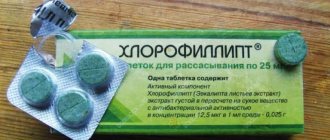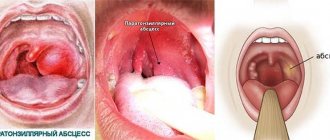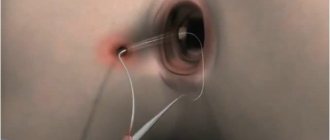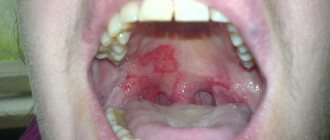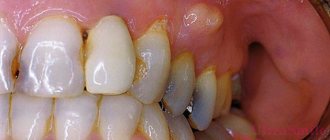A purulent abscess in the throat is an infectious and inflammatory disease that often develops as a complication of various pathologies of the ENT organs. This condition requires emergency surgery as it can lead to suffocation in severe cases. An abscess, or abscess, quite often quickly increases in size, which is why it can compress the airways. Therefore, in order to prevent the development of complications, if sharp severe pain appears in patients with a sore throat or acute respiratory viral infection, you should immediately seek help from an ENT doctor.
Possible reasons
Throat abscess is more often diagnosed in young patients. In most cases, this condition is preceded by some kind of infectious disease of the oropharynx. With these pathologies, there is a transition of the inflammatory process to the lymphoid tissue of the throat. Gradually, pus begins to form, significant swelling occurs, which leads to compression of the airways.
The main reason for the appearance of an abscess is the insufficient effectiveness of therapy for infectious pathology. Therefore, those patients who prefer to treat throat diseases at home without the use of antibiotics are at risk.
An important role is also played by decreased immunity, which is observed in diseases such as influenza, scarlet fever and measles. Despite the fact that these are viral pathologies, the occurrence of an abscess is associated with the addition of a bacterial infection. The following pathogens can cause it:
- streptococcus;
- staphylococcus;
- Klebsiella;
- Proteus.
In approximately 20-25% of cases, an abscess in the oropharynx forms as an independent pathology without a previous disease. This occurs when there are sources of infection in the patient’s body, for example, carious teeth, gum inflammation, etc. When the mucous membrane of the oropharynx is damaged by solid food, microorganisms penetrate into the lymphoid tissue, where inflammation begins.
Important! The risk of abscess formation is increased in people with sinusitis and other chronic inflammatory diseases of the ENT organs, as well as diabetes. Hypothermia and smoking can also play an important role in the occurrence of inflammation.
What is an abscess and how does it develop with sore throat?
During inflammation of the palatine tonsils, the pathological process can spread beyond the affected tissue. Around the tonsils there is fiber, which is quite loose. Inflammation, moving into this space, leads to the formation of a cavity filled with pus. This is how an abscess develops with a sore throat.
As a rule, suppuration occurs at the upper pole of the tonsil with tonsillitis. In this part, the fiber has a loose structure, there are deeper crypts, therefore, if the outflow of pus worsens, the penetration of inflammation into the surrounding tissues is quite likely.
In the throat, ulcers are found in the retropharyngeal, lateral and paratonsil spaces. Of these, paratonsillar abscess is characteristic of tonsillitis.
Abscesses can also occur around other tonsils (tubal, lingual, nasopharyngeal). The reasons for the appearance of such ulcers include chronic diseases of the ENT organs and the oral cavity. The rarest form is purulent inflammation around the lingual tonsil.
By what signs can you tell?
The first manifestations of the complication occur 2-3 days after the mucous membrane is damaged or the symptoms of sore throat subside. In young children, the inflammatory process develops much faster, so the first signs of the disease may appear within 24 hours.
Symptoms of a throat abscess include:
- repeated occurrence of pain in the oropharynx, which radiates to the jaw and ear on the affected side;
- discomfort, feeling of a lump in the throat;
- increased body temperature above 38.0-39.0 degrees;
- smell of pus from the mouth;
- general intoxication, chills;
- spasm of the chewing muscles, making it difficult to open the mouth;
- enlarged and painful lymph nodes in the neck and under the lower jaw.
Upon examination, sharp redness of the mucous membrane of the tonsils and its swelling are determined. If the abscess is significant in size, a tumor-like formation is detected in the pharynx area, which displaces the uvula and tonsils anteriorly. Also, if there is a large abscess, the patient may experience pain and discomfort when turning the head.
In some cases, spontaneous opening of the abscess occurs. Then the symptoms weaken sharply, and the patient’s condition improves significantly in a short period of time. However, this does not mean that treatment should be stopped, since the risk of re-suppuration remains.
How is an abscess recognized?
Symptoms of the purulent process begin 2–4 days after the subsidence of a sore throat or injury to the tonsils. As a result of a violation of the integrity of the mucous membranes, microorganisms penetrate into the lymphatic vessels, which leads to the formation of ulcers. In children with reduced immunity, a tonsil abscess develops within 24 hours.
Attention! The formation of an abscess begins soon after the inflammation of the glands decreases.
Against the background of subsiding symptoms of sore throat, signs of a throat abscess develop:
- a sore throat reappears, spreading to the teeth and ear;
- feeling of a lump in the throat;
- hyperthermia up to 40.0 °C;
- chills;
- difficulty swallowing food;
- Trismus of the masticatory muscles prevents mouth opening;
- enlargement of the submandibular lymph nodes;
- purulent odor from the mouth;
- prostration.
Symptoms of an abscess are enlarged tonsils, redness and swelling of the surrounding tissue. The tonsils are pushed forward, displacing the uvula. If the abscess is large, pain is felt when turning the head and neck. There is a feeling of difficulty and inconvenience.
With a throat abscess, the symptoms subside if the abscess opens on its own. In this case, pain decreases, temperature decreases, and the patient’s condition improves. On the other hand, such an outcome is fraught with consequences - the formation of several repeated ulcers at once cannot be ruled out.
Types of disease
The inflammatory process can affect various parts of the oropharynx. Based on location, the following types of abscesses are distinguished:
- peripharyngeal, or peritonsillar - this type of abscess is typical for young people. The abscess is localized on the side of the throat, which leads to pain when tilting the head;
- retropharyngeal, or retropharyngeal - localized on the back surface of the pharynx;
- paratonsillar abscess of the throat - located close to the tonsils. It usually occurs after a severe sore throat, more often in older people.
In all cases, the pathological process begins in the lymph nodes located in the oropharynx. Gradually it spreads to fatty tissue, which leads to the development of inflammation in it - paratonsillitis. Gradually, this condition turns into the form of an abscess.
Kinds
The International Classification of Diseases divides pharyngeal abscess into types depending on the location of the lesion. The most common is the anterior one, located in the upper zone of the tonsils. The lower one is located at the bottom of the tonsils, the posterior one is between the tonsils and the posterior inner palate, and the lateral abscess is where the inflammation spreads to the neck and chest.
We recommend further reading: What to do if the tonsils are swollen and it hurts to swallow, treatment of tonsil swelling
Purulent accumulations are divided into three types, which have their own characteristic features
Peritonsillar
A complication of tonsillitis can cause paratonsillar abscess of the palate and throat. This is the most dangerous stage of throat disease. The development of inflammation is caused by infection of the suppurating surfaces of the tonsils at the mouths of the lacunae.
Symptoms and treatment of peritonsillar throat abscess depend on various factors:
- making a diagnosis;
- stages of inflammation;
- method of therapy.
Inflammation begins with acute pain in the throat. This pain then spreads quickly and makes it difficult to swallow. An increase in temperature is accompanied by insomnia and weakness in the body.
The progression of the complication also leads to pain when turning the head. The patient feels worse and worse.
Recurrence of paratonsillar abscess of the throat, or as it is also called paratonsillitis, recurs more than once a year. Development factors are:
- injuries;
- bacterial infections;
- dental disorders.
The prognosis of an acute purulent process depends on the timely initiation of treatment and the effectiveness of antibiotic therapy.
Parapharyngeal
Purulent inflammation occurs due to parapharyngitis of odontogenic nature in the pharyngeal-maxillary space. A purulent abscess in the throat causes such severe pain that the patient refuses to eat.
Treatment of throat abscess in adults is prescribed according to the interpreted symptoms:
- unilateral inflammation of the throat;
- discomfort in the side of the neck;
- increase in the size of lymph nodes;
- febrile fever.
If therapy is not started on time, parapharyngeal inflammation can cause a complication in the form of jugular vein thrombosis.
Retropharyngeal
The purulent process develops in the retropharyngeal space. It can be caused by infections of the adenoids, paranasal sinuses, and nasal cavity. The disease occurs mainly in childhood. Adults rarely get sick.
Retropharyngeal abscess of the throat has symptoms similar to other types. Purulent inflammation is accompanied by the following signs of an abscess in the throat:
- weakness;
- sweating;
- fever and sore throat;
- spasm of the lower jaw.
The causative agents of purulent inflammation of soft tissues are most often Staphylococcus, hemolytic Streptococcus, and Escherichia coli.
Diagnostics
To make a diagnosis, the doctor examines the patient, determines when the complaints appeared and how they changed over time. Pharyngoscopy and laryngoscopy are also performed - these methods allow you to visually assess the condition of the mucous membrane of the throat and larynx. This helps to determine the location and type of abscess, which is necessary for selecting treatment tactics.
In cases where the methods listed above do not provide enough information to make a diagnosis, tomography and ultrasound examination are indicated. To assess the general condition of the patient and the severity of inflammatory processes, a general and biochemical blood test is prescribed. After carrying out the listed diagnostic procedures, treatment of the disease begins.
Drug therapy
Conservative treatment is carried out in mild cases, when the abscess is small in size and the risk of complications is minimal. This therapy includes the use of the following drugs:
- local antiseptics;
- systemic antibiotics;
- antihistamines;
- local anesthetics;
- vitamins and restoratives.
Conservative therapy can be carried out on an outpatient basis. However, treatment should not be carried out without the supervision of a doctor in order to prevent the development of complications.
What to do and how to treat
At the first signs and symptoms of a peranthosillar abscess, it is important to remember that treatment at home is impossible, so the patient must be hospitalized immediately. Standard medications for angina, which are used to treat angina or other diseases during which similar complications could occur, are not suitable for treatment. Traditional medicine is used in combination with the treatment prescribed by doctors, but you should not get carried away with them in order to avoid exacerbations.
In practice, gargling with Rotokan, Sage infusion, Furacilin, chamomile decoction or soda solution is often used. With timely treatment measures, the chances of successful recovery increase significantly. There are three methods of procedures, depending on the symptoms and nature of the disease:
- Conservative therapy is physiotherapeutic procedures using local and general medications that are effective at the early stage of the inflammatory process.
- Complex therapy is the most popular method, due to its high therapeutic effectiveness of various types of joint procedures.
- Surgical intervention is a physical impact on damaged tissues of the pharynx, for the radical and rapid elimination of an illness that has progressed to a severe stage.
The main procedures that are used in the early stages of inflammation are the prescription of painkillers, such as Novocain and Dicain, in addition to them, the use of antiseptics, analgesics and intramuscular administration of antibiotics are practiced, among which the most popular in such cases are macrolides, cephalosporins and amoxicillins. For example, Pennicillin and Cefazolin.
For frequent cases of tonsillitis, the most rational action is to remove the tonsils on both sides in order to prevent the possibility of relapse in the future. After surgery, the stage of conservative treatment begins with taking medications and treating the operated area. It consists of the following procedures:
- Taking anti-inflammatory and antihistamine drugs, analgesics, Paracetamol, intraconazole.
- Rinsing the mouth with antiseptic agents, for example: Miramistimin, Furacillin.
- Intravenous detoxification with hemodez and similar medications.
- Antibiotics: Amoxicillin, Penicillin, Amikacin, Gentamicin, Ceftriaxone, Cefuraxime and Cefazolin.
- Bed rest, plenty of fluids inside, soft food. Before surgery, intravenous feeding with 0.9% sodium chloride solution and 5% glucose is possible.
Medicines are not taken orally to avoid aggravating the patient's condition. They are prescribed rectally, intravenously, intramuscularly or parenterally.
Surgical methods
In most cases, surgical treatment is indicated, the essence of which is to open the pharyngeal abscess and remove the accumulated pus. In most cases, the operation is performed under local anesthesia. In severe cases, intervention may be performed under anesthesia.
After administering the anesthetic, the surgeon treats the affected surface with an antiseptic solution. Then the doctor makes an incision with a scalpel on the most protruding part of the abscess. To prevent relapse of the disease, drainage in the form of a thin rubber strip is left in the abscess cavity, which is removed after a few days.
To combat the cause of the disease, antibacterial drugs are administered intramuscularly. General strengthening and vitamin therapy is also carried out. The total duration of treatment in such cases is at least 7 days.
Treatment with folk remedies
How to treat a throat abscess at home? First of all, it should be noted that traditional methods are indicated only as an addition to the main treatment of the disease. They can be used only as prescribed by the attending physician.
The following gargles will help ease the general well-being of the patient:
- sea salt solution - dissolve it in the ratio of a tablespoon per glass of warm water;
- chamomile infusion - take a teaspoon of the dry plant, pour a glass of boiling water and leave for an hour;
- calendula infusion - the method of preparing this remedy is no different from the previous one.
The resulting medications have an antiseptic effect and help soften irritated mucous membranes. It is recommended to rinse with them 3-4 times a day after meals.
Treatment
Treatment is prescribed only by a doctor after receiving test results. If the disease occurs in its initial (mild) form, it can be managed with the help of medications and traditional medicine. In cases of severe pathology, surgical intervention is already required.
Drug therapy
A course of therapy for a throat abscess is prescribed by a doctor. Treatment with medications involves taking medications that eliminate the disease, symptoms, and also increase immunity. The table shows the main drugs for the treatment of throat abscess:
| Group | Name |
| Antibiotics - fight the bacteria that causes the disease. | Penicillin series - “Amoxiclav”, “Amoxicillin”, “Ampicillin”. Cephalosporins - Cefixime, Ceftriaxone. Macrolide group - Clarithromycin, Spiramycin. |
| Antihistamines - relieve swelling from the tonsils. | "Suprastin", "Citrine", "Tavegil". |
| Painkillers - reduce pain. | “Dexalgin”, “Nise”, “Ketanov”. |
| Topical antiseptics - used for gargling. | "Chlorhexidine", "Hexoral" or "Miramistin". |
| Multivitamin complexes prevent the development of vitamin deficiency and support the body. | "Vitrum", "Duovit", "Complivit". |
| Antipyretics - normalize body temperature. | "Paracetamol", "Nurofen". |
| Immunostimulants - stimulate immune functions. | "Bronchomunale", "Imudon". |
Important! Self-medication in all cases leads to aggravating consequences and deterioration of the patient’s well-being, therefore uncontrolled use of medications is prohibited.
Operation
Before surgery, the throat is numbed. Surgical intervention is required, as a rule, in severe forms of abscess with a temperature that is unresponsive to medication. The autopsy takes place under local anesthesia and strict medical supervision. The purpose of the operation is to eliminate accumulated purulent formations. After surgical procedures, the patient’s condition is stabilized, and the risk of complications is minimized. If you do not open the abscesses, then intoxication begins and the course of the disease becomes more complicated. To remove pus, the doctor makes a small incision on the abscess, and then, spreading the edges of the wound, eliminates pathogenic accumulations. In especially severe cases, drainage installation is required. After the operation, the patient is recommended to:
- take antibiotics and medications that eliminate symptoms;
- eat healthy foods rich in vitamins and microelements;
- treat the throat with antiseptic agents.
For a speedy recovery, you need to follow a sleep and rest schedule, and also give up smoking and drinking alcoholic beverages. If you do not adhere to a healthy lifestyle, the rehabilitation period increases and most often does not bring positive results.
Treatment with folk remedies
Frequent gargling relieves pain.
Traditional healers' recipes do not belong to the main method of therapy, but are a good addition to enhance the therapeutic effect. The following compositions are prepared for gargling:
- Sage infusion. Pour 2 tbsp into a thermos. l dried sage flowers, pour 400 ml of boiling water, let it brew for 1–1.5 hours, use for rinsing 3–5 times a day. It is important that the infusion cools down, as boiling water can burn your throat.
- Saline solution. Dissolve 1 tbsp. l salt in 100 ml warm water and gargle 3 or 4 times a day. Cold water should not be used; its temperature should be 30–35 degrees.
- Tincture of calendula flowers. It is prepared according to the principle of sage infusion and is used 3–5 times a day. Before rinsing, you can add 1 teaspoon of natural liquid honey.
- Honey composition with garlic. Grind 5 cloves of garlic, mix the resulting mass with 200 grams of dark honey, consume 3-4 times a day, 1 tsp.
- Chamomile decoction. Place 2 tbsp in a saucepan. l of raw materials, pour 400 ml of water, boil for 3–5 minutes, cool, strain. Gargle your throat with this decoction at least 4-5 times a day.
The more thoroughly you gargle, the better the result will be. After the procedure, eating is not recommended for 30–40 minutes. This is necessary so that the medicine has time to be absorbed into the mucous membranes of the throat.
How dangerous is a throat abscess?
The danger of a throat abscess is associated with the possibility of suffocation. This occurs in cases where the abscess reaches a significant size and blocks the airways. The greatest risk of such a complication occurs when the abscess is located on the lateral or lower surface of the tonsils.
Important! As the abscess grows, the patient notes an increase in shortness of breath. If such a symptom appears, you should seek help from a doctor as soon as possible.
Another complication of abscesses is associated with high activity of the inflammatory process. In some patients, this condition leads to the formation of parapharyngeal cellulitis. It is also characterized by purulent inflammation, but in this case the process is diffuse in nature and manifests itself with more severe symptoms.
The purulent process can also spread to the mediastinum - the space in the chest where the heart is located. In this case, mediastenitis develops - a serious complication that can lead to death. Despite its severity, this pathology is very rare; its cause is usually associated with significant suppression of the immune system.
Prevention
To prevent the development of suppuration of the throat tissue, the possible causes of this pathology should be dealt with in a timely manner. This means that it is necessary to avoid hypothermia and give up bad habits. Patients with severe pain in the oropharynx should not self-medicate; it is better to consult a doctor. After completing the diagnostic procedures, he will give recommendations that should be followed in full.
It is especially important to complete antibiotic therapy - many people stop using antibacterial drugs after their general condition improves and symptoms disappear. Because of this, inflammation may re-develop, and the infection in this case will be less susceptible to medications.
Oropharyngeal abscess is a severe purulent-inflammatory complication of many diseases of the ENT organs. It is better to take timely measures aimed at preventing it in order to prevent the development of severe complications.
Treating a sore throat at home
Under no circumstances should an abscess be allowed to start; if the first symptoms of inflammation are detected, you should immediately consult a doctor. Delay is fraught with deterioration of the condition, especially if a person has chronic diseases. In addition, sometimes an abscess can actually lead to suffocation. The doctor will determine the severity of the inflammation, prescribe effective antibiotics for a sore throat, or recommend other treatment methods. In some cases, the abscess is removed surgically.
How to treat ulcers in the throat
Taking antibiotics is mandatory for an abscess, otherwise the inflammation will spread to the lower parts of the nasopharynx. These are penicillin-containing drugs (“Amoxiclav”, “Ampicillin”). If the disease is too severe, then stronger medications are prescribed: Romavicin, Josamycin, Ceftriaxone. Therapy should begin in the first stage. Be sure to also use a number of other medications:
- to relieve pain and inflammation (Nurofen, novocaine blockades);
- antihistamines to relieve edema (Zyrtec, Tavegil);
- vitamin complexes;
- immunostimulants (“Imudon”);
- antiseptics for gargling (Chlorhexidine, Hexoral).
How to relieve a sore throat when swallowing on one side
To alleviate the condition and prevent it, you can try several traditional medicine recipes. They will not cure the abscess, but will relieve the symptoms:
- Take 200 grams of honey, one large lemon, 5 large cloves of garlic and 150 g of ginger root. Wash the fruit and grind together with the peel in a blender. Add garlic and beat again. Grate the ginger. Mix all ingredients with honey. This composition is allowed in any quantity.
- Brew a teaspoon of green tea in half a liter of water. Strain and place on low heat. Grate a small ginger root and add to the liquid. Remove it from the heat, when it boils, add a tablespoon of honey, the juice of half a lemon, and spices. It is advisable to drink a portion per day.
- Grate large beets, pour in 20-30 ml of apple cider vinegar, and leave for a while. Squeeze the juice and gargle with it every three hours.
- Add a teaspoon of soda and salt, 5 drops of iodine to half a liter of warm water. Stir until completely dissolved. Use as a gargle every two hours.
- Pour 250 ml of boiling water over 30 grams of sage. Cook for a few minutes. Cool the broth, strain, and use to gargle.
- Mix horseradish, honey and ground cloves in equal proportions. Pour a tablespoon of the composition into a glass of water. Drink in small sips.
- Mix one part propolis tincture with ten parts water. Use to rinse.

